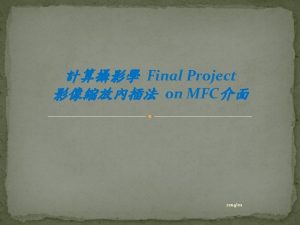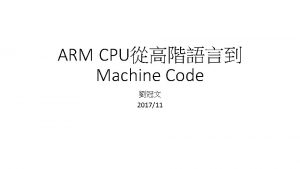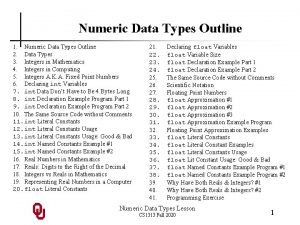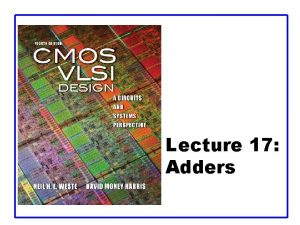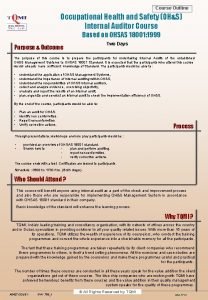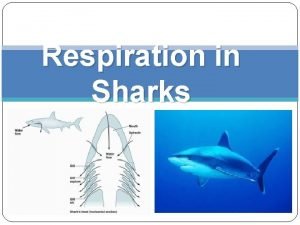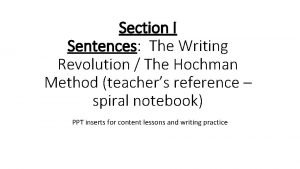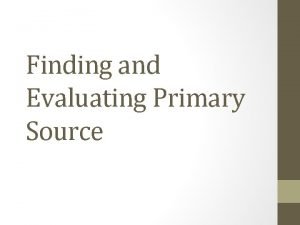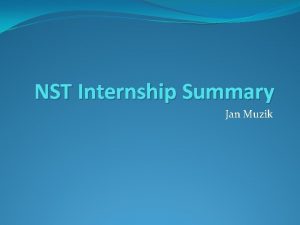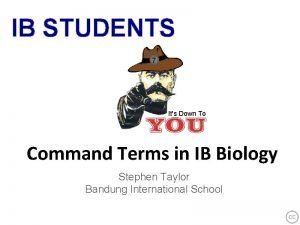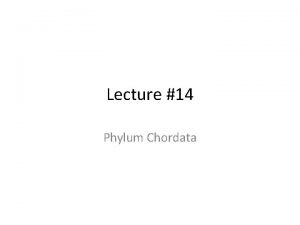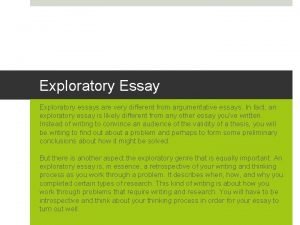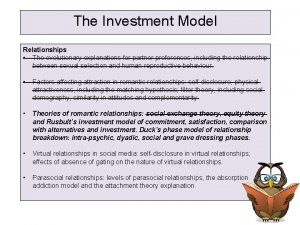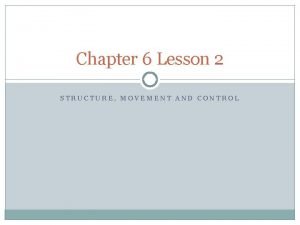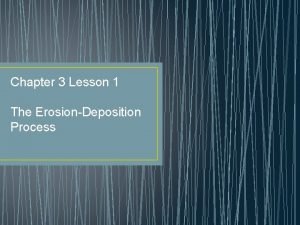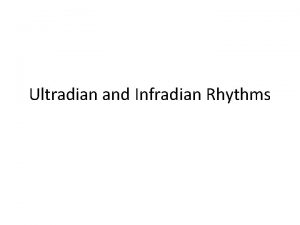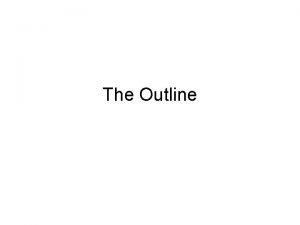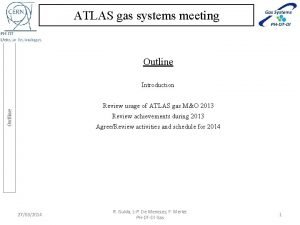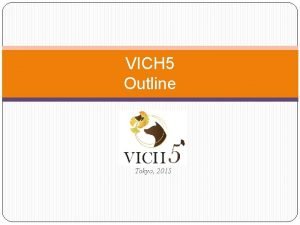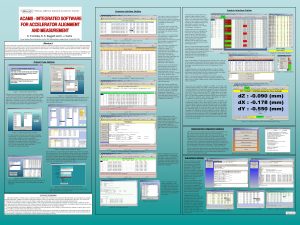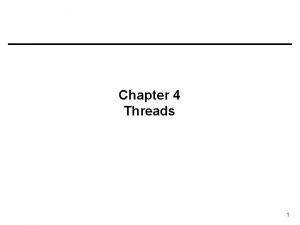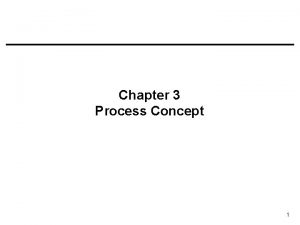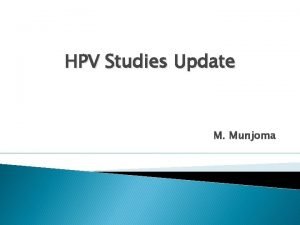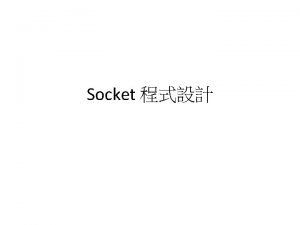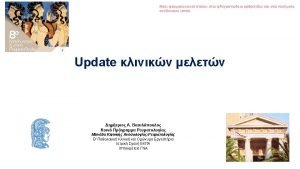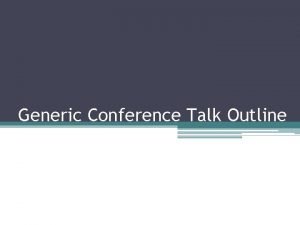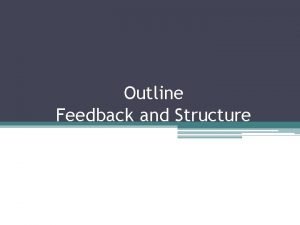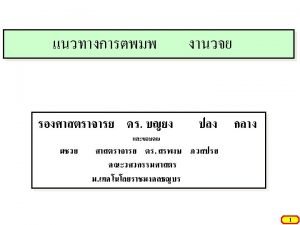1 Outline 1 2 3 4 5 6


































- Slides: 34

1 Outline 1. 2. 3. 4. 5. 6. Definition The interview as test Types of question Types of interview Principles of effective interviewing Problems the interviewer may face

2 1. Definition • An interview is a conversation with a purpose • Purpose: gathering information about the person being interviewed. • Outcome: data for description, evaluation, and prediction

3 2. The interview as test • Huffcutt et al. (2001) • Reviewed 47 studies of the employment interview • Assessed what interviews tell us about: – Personality – Social skills – Mental ability

4 2. The interview as test • Huffcutt et al. : • Employment interviews are not like other tests • Don’t tell us something specific • Designed to allow a conclusion – e. g. , should we hire this person? • Outcome: complex function of many dimensions

5 3. Types of question • • Open-ended Closed-ended

6 Open-ended questions • tailored to individual interviewee • cannot be answered specifically • responsive to what interviewee just said • interviewee decides what is important to discuss, which tells you something about them

7 Open-ended questions • Examples of openended questions: • What kinds of cars do you like? • Tell me about your father

8 Closed-ended questions • can be answered specifically • interviewee has to recall something • same questions for all interviewees

9 Closed-ended questions • Examples of closedended questions: • Do you like sports cars? • Is your father strict?

10 4. Types of interview • • Unstructured Semi-structured Group

11 Unstructured interviews • Questions follow from previous response – they’re not set ahead of time • Follow up with understanding responses to encourage more disclosure

12 Unstructured interviews • Advantages: – Lots of data – Unexpected things learned • Disadvantages: – subjective evaluation – may wander off topic – non-standardized – can’t be replicated

13 Structured interviews • same procedure for all interviewees • same questions asked in same sequence • closed, short, clearlyworded questions • follow a flow-chart (include/exclude some questions depending on answers to others)

14 Structured interviews • Advantages: – standardized format – objective evaluation • Disadvantage: – one size may not fit all

15 Semi-structured interviews • Shares some features with structured interview, some features with unstructured interview • Guided by a script which gives focus • Allows you to explore interesting responses

16 Group interviews • Usually 3 – 10 people at one time • May be structured or unstructured • Really dependent upon skilled moderator

17 Group interviews • Advantages – rich data – variety of views • Disadvantages: – expensive – “loud-mouths” may dominate – conformity pressure?

18 5. Principles of effective interviewing 1. 2. 3. 4. Be responsible Plan ahead Keep the interaction flowing Have the appropriate attitude

19 Be responsible • Interviewer sets the tone • Interviewer is responsible for success or failure of interview • Professionals accept responsibility

20 Plan ahead • Who will be interviewed? • Where? When? • What is the purpose? • Which questions will you ask? In what order? • Will you record?

21 Keep interaction flowing • Conversation skills • Comprehension monitoring • • • Verbatim playback Paraphrasing Restatement Summarizing Clarifying Understanding

22 Types of understanding response • Carl Rogers created a typology of interviewer’s responses to interviewee • 5 levels varying in how well the response connects to what interviewee just said

23 Types of understanding response • To be avoided: – Level 1 – a series of non-sequiturs – Level 2 – little connection with interviewee’s last response • For unstructured interviews: – Level 3 – interviewer’s response is interchangeable with interviewee’s last statement

24 Types of understanding response • Primarily used in therapeutic interviews: – Level 4 –adds “noticeably” to interviewee’s response – Level 5 – adds “significantly” to interviewee’s response

25 Have appropriate attitude • Interpersonal attraction predicts interpersonal influence • Be warm, genuine, accepting, understanding, open, honest, fair

26 6. Problems interviewer may face • • • Social facilitation Spotlight effect Validity & reliability issues

27 Social facilitation • Occurs when people act like other people around them • May not know you are doing this • May communicate something • E. g. , Goldstein & Cialdini (2007) – spyglass effect • Chartrand & Bargh (1999) – chameleon effect • Akehurst & Vrij (1999)

28 Spotlight effect • Gilovich et al (2000): • You think other people notice all your • People tend to believe mistakes and silliness that the social spotlight shines more • But they don’t brightly on them than it really does.

29 Problems of validity • predictive validity • consider interview scores for interview data as tentative – a data range from. 09 to source of hypotheses. 94 (Wagner, 1949) to be tested against other data

30 Problems of validity • Halo effect (Thorndike, 1920) • tendency to judge specific traits on the basis of a general impression • generalize judgments from limited experience

31 Problems of validity • General standoutishness (Hollingworth, 1922) • general judgment made on basis of one notable characteristic • beautiful people often rated as more witty, likable, socially skilled, intelligent, warm (Feingold, 1992)

32 Problems of validity • Cross-cultural interviews: lots of potential for misunderstanding • Be flexible; introspect; learn about groups you will be in contact with

33 Problems of validity • E. g. , Darou et al. (2000): northern Quebec Cree ejected 7 of 8 psychologists who came to study them. • Researchers asked Cree for selfdisclosure, which is socially inappropriate among the Cree

34 Problems of reliability • inter-interviewer agreement • twice as high for structured as for unstructured interviews • may be low because 2 interviewers spontaneously focus on different things • if so, train interviewers to focus on specific things that matter
 What is a quote sandwich
What is a quote sandwich Laplacian pyramid
Laplacian pyramid Outline arm
Outline arm Numeric outline
Numeric outline Adderq
Adderq Occupational health and safety course outline
Occupational health and safety course outline Shark physical characteristics
Shark physical characteristics Fall protection training outline
Fall protection training outline Hochman writing worksheets pdf
Hochman writing worksheets pdf Primary source outline
Primary source outline Ace method saq example
Ace method saq example The shepherd and his flock
The shepherd and his flock Jan muzik
Jan muzik Exegetical outline
Exegetical outline Hebrews 2:1-4 sermon outline
Hebrews 2:1-4 sermon outline Outline ib command term
Outline ib command term Classification of chordates
Classification of chordates Exploratory essay outline
Exploratory essay outline Investment model of relationships
Investment model of relationships Ooredoo outline key
Ooredoo outline key Point-by-point essay outline example
Point-by-point essay outline example Outline of 1 corinthians
Outline of 1 corinthians Photosynthesis outline
Photosynthesis outline Lesson outline structure movement and control
Lesson outline structure movement and control Trade secrets outline
Trade secrets outline Mind raider
Mind raider Named blocks in pl sql
Named blocks in pl sql Mountain building
Mountain building The mice in a house afraid of the cat hold a meeting
The mice in a house afraid of the cat hold a meeting Genesis outline
Genesis outline Outline of joel
Outline of joel What is the laying down or settling of eroded material
What is the laying down or settling of eroded material Outline one or more examples of ultradian rhythms
Outline one or more examples of ultradian rhythms North atlantic map outline
North atlantic map outline Discussion outline
Discussion outline

